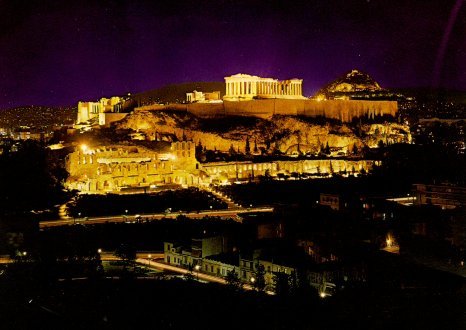Locations

It was found that the hill was inhabited since the 3rd millennium BC From the 6th century
B.C. were built up in him the sacred Athenians like Hekatompedon etc., destroyed during the Persian wars. The rebuilding of the walls and shrines began immediately after the defeat of the Persians in 465 BC, during that of Pericles. Under the supervision of Phidias and architects Mnisiklis, Kallikratis and Callimachus were built and decorated the Parthenon, the Erechtheion, the Propylaea and the Temple of Athena Nike. During the Roman period added some minor build it. During the Byzantine period, the Parthenon was converted into a Christian church. During the Frankish became Catholic church, and after the ottoman mosque. During the Ottoman period, the Acropolis suffered the most damage. The Turks had stored gunpowder on it and was the cause to destroy the monuments. In 1645, a bolt of lightning that struck the gunpowder blew the Propylaea. In 1687, when the Acropolis besieged the Venetian Morosini, one of the bombs struck the gunpowder that was stored in the Parthenon and destroyed the temple. Extensive damage caused by the Englishman Lord Elgin just before the Revolution of 1821. He had dismantle the Parthenon frieze, metopes, pediments, one caryatid and a column of the Erechtheion, which moved to England. For all this he paid 35,000 pounds to the Turks and the Athenians donated a clock, erected in the ancient market. In 1821, the Acropolis was besieged successively by Greeks and Turks suffered new disasters. In 1834 began the archaeological work on the restoration of monuments
